How To Introduce Nervous Dogs To Your Pool Safely
Introducing a nervous dog to your pool requires patience, gradual exposure, and positive reinforcement. Start with shallow water, use treats and toys to build confidence, and never force your dog into the pool. With careful steps, you can help your dog enjoy swimming safely and happily.
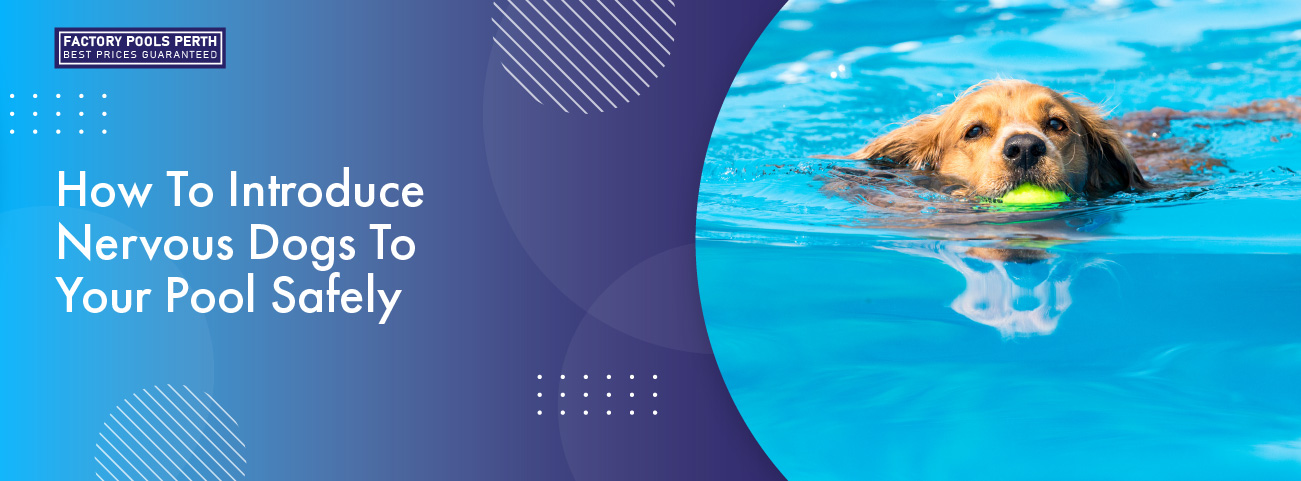
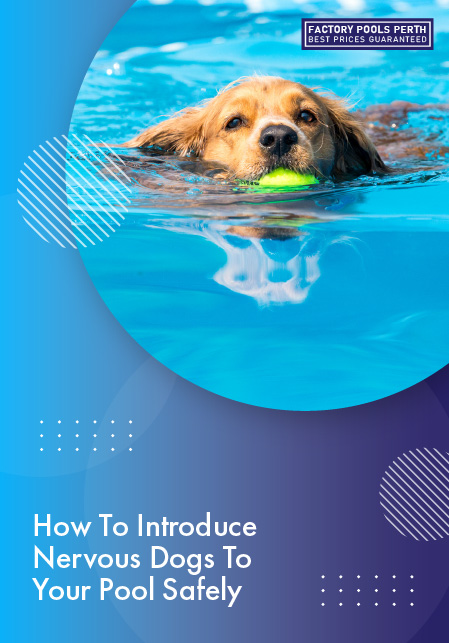
Understanding Why Dogs Fear Water
Not all dogs are natural swimmers. While some breeds, such as Labradors or Newfoundlands, tend to enjoy water, smaller or short-legged breeds may feel anxious around pools. Fear can also result from negative past experiences, unfamiliar environments, or simply lack of exposure to water. Recognising these signs early helps you approach your pool introduction carefully and safely.
Signs Your Dog Is Nervous Around Water
- Hesitation or reluctance at the pool edge
- Trembling, cowering, or attempting to retreat
- Barking, whining, or signs of stress
- Avoiding the pool area completely
- Pacing or showing excessive alertness
Observing these behaviours ensures you don’t accidentally push your dog into a stressful situation. Understanding your dog’s body language is the first step in creating a positive, safe pool experience.
Preparing Your Pool Area for a Nervous Dog
A safe and welcoming pool environment makes a big difference when introducing a nervous dog.
Secure Fencing and Non-Slip Surfaces
Ensure your pool has secure fencing to prevent accidental falls. Adding non-slip mats or textured surfaces near the pool entry helps nervous dogs feel stable and confident when approaching water. Non-slip surfaces are particularly important for small breeds or dogs with arthritis.
Use a Dog-Friendly Pool Ramp or Steps
Dogs with anxiety feel safer when they can enter and exit the pool gradually. A gentle slope, wide steps, or a ramp reduces fear and makes swimming accessible. For dogs unfamiliar with steps, a ramp allows them to test the water slowly, increasing confidence over time.
Keep the Area Calm
Minimise distractions such as loud noises, splashing, or sudden movements around the pool. A calm environment helps nervous dogs focus on positive experiences rather than stress triggers.
Step-By-Step Guide To Introducing Your Dog To The Pool
Introducing a nervous dog to a pool isn’t about speed. Patience and repetition are key.
Stage 1: Familiarisation With the Pool Area
- Let your dog explore the poolside while it’s empty or shallow.
- Offer treats and praise when your dog approaches the pool without stress.
- Avoid forcing interaction; allow curiosity to build naturally.
Encouraging exploration at the dog’s pace helps them associate the pool area with positive experiences. Simply walking around the pool and sniffing can build confidence.
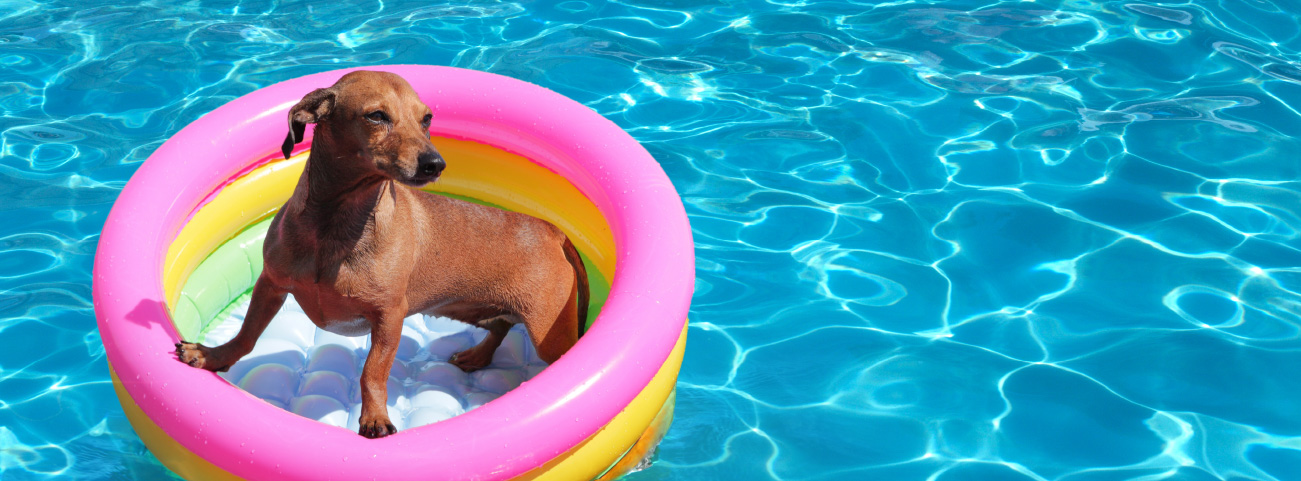
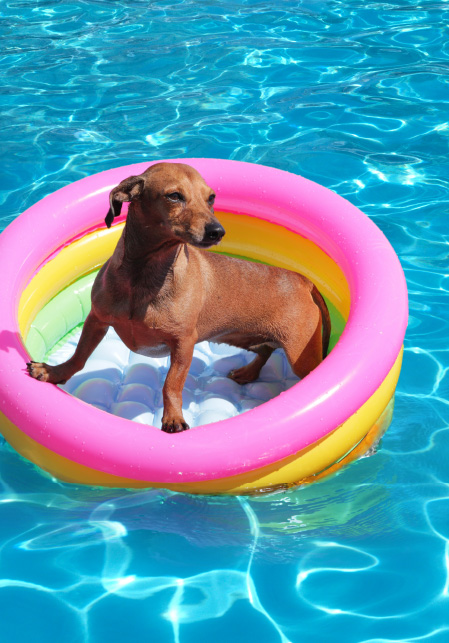
Stage 2: Encouraging Gentle Water Contact
- Fill a shallow area or kiddie pool with a small amount of water.
- Encourage your dog to step in using favourite toys or treats.
- Keep sessions short, 5–10 minutes, to avoid overwhelming your dog.
This stage helps your dog understand that water is safe and fun, not a threat. Repeating this step over several days allows them to gain comfort gradually.
Stage 3: Gradual Pool Entry
- Begin at the pool’s shallow end or with a pool ramp.
- Support your dog gently if needed, using a dog life vest for added safety.
- Allow your dog to retreat if nervous; never force swimming.
Remember, patience is essential. Some dogs may take multiple sessions before entering the water confidently. Celebrate small wins to encourage continued progress.
Stage 4: Positive Reinforcement
- Reward every small step with treats, praise, or play.
- Introduce floating toys to encourage interaction with water.
- Use favourite toys to motivate nervous dogs and create positive associations.
Positive reinforcement is the most effective way to teach a nervous dog that the pool is enjoyable. Avoid punishment, which can increase fear and resistance.
Choosing The Right Equipment For Nervous Dogs
Using the right gear improves safety and builds confidence.
Dog Life Vests
- Keep anxious swimmers buoyant and secure.
- Many vests feature handles for lifting your dog safely out of the water.
- Ensure the vest fits snugly without restricting movement.
Life vests are particularly helpful for small breeds, older dogs, or those with limited swimming experience.
Pool Ramps And Steps
- Help dogs enter and exit independently.
- Reduce slips, falls, and panic near pool edges.
- Ideal for nervous or physically limited dogs.
A well-placed ramp can turn pool entry into a positive, low-stress activity.
Pool Toys And Floatables
- Floating toys encourage curiosity and play.
- Games in shallow water reinforce positive experiences.
- Use toys your dog loves to motivate them.
Toys make the pool a place of fun, not fear, and encourage repeated, confident visits.
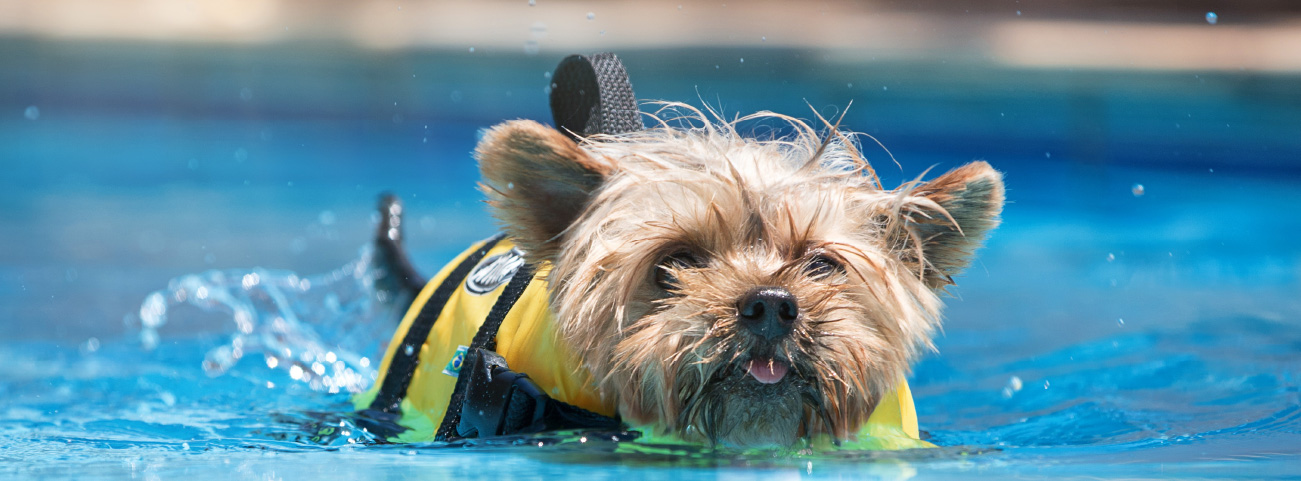
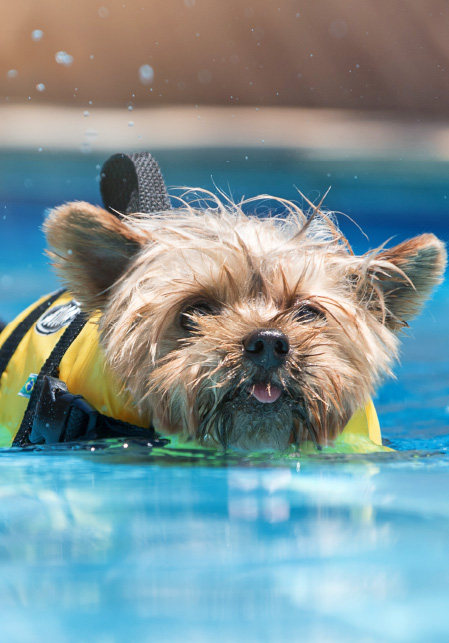
Training Tips For Confident Swimming
Training alongside your dog enhances trust and reduces anxiety.
Use Calm, Reassuring Behaviour
Dogs are highly sensitive to human emotions. Speak softly, move slowly, and maintain a relaxed posture. Sudden movements, loud noises, or frustration can increase anxiety.
Short, Frequent Sessions
Shorter, regular sessions are more effective than long, overwhelming periods. Start with 5–10 minutes, gradually increasing duration as your dog gains confidence.
Pair Water With Rewards
Treats, praise, and play reinforce positive associations. Every successful attempt, no matter how small, should be rewarded. Consistent reinforcement builds trust and enthusiasm for swimming.
Practice Patience
Some dogs may take weeks to feel comfortable in the water. Avoid rushing the process. Allowing your dog to progress at their own pace prevents setbacks and reinforces positive behaviour.
Safety Considerations For Nervous Dogs
Even with careful training, safety must remain a priority.
Never Leave Dogs Unsupervised
Even with careful training, safety must remain a priority.
Know Your Dog’s Limits
Some dogs may never fully embrace swimming, and that’s okay. Respect their comfort level and allow retreat without pressure. Forcing a dog to swim can worsen fear and create long-term aversion.
Maintain Clean, Safe Water
Chlorine and pool chemicals can irritate sensitive skin and eyes. Check water quality regularly, and rinse your dog after swimming. Fresh water also reduces the risk of infections and keeps your dog comfortable.
Benefits Of Swimming For Dogs
Encouraging pool time provides both physical and mental advantages.
Physical Exercise
Swimming is low-impact and perfect for dogs with joint problems or arthritis. It strengthens muscles, improves stamina, and helps maintain a healthy weight.
Mental Stimulation
Learning to swim, exploring water, and playing with toys provides mental enrichment. Swimming challenges the dog physically and mentally, helping reduce boredom and destructive behaviour.
Strengthened Human-Dog Bond
Shared pool experiences foster trust and companionship. Engaging your dog in training, games, and praise strengthens your bond.
Introducing a nervous dog to your pool requires patience, positive reinforcement, and a safe environment. By taking gradual steps, using dog-friendly equipment, and respecting your dog’s limits, most dogs can enjoy swimming confidently. Even if your dog never becomes a water lover, these strategies help reduce anxiety and make poolside experiences enjoyable for everyone.

